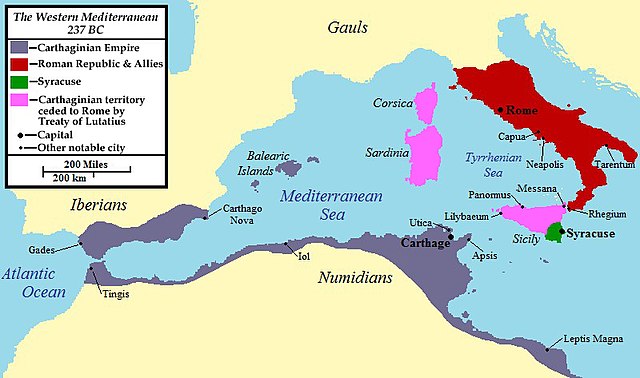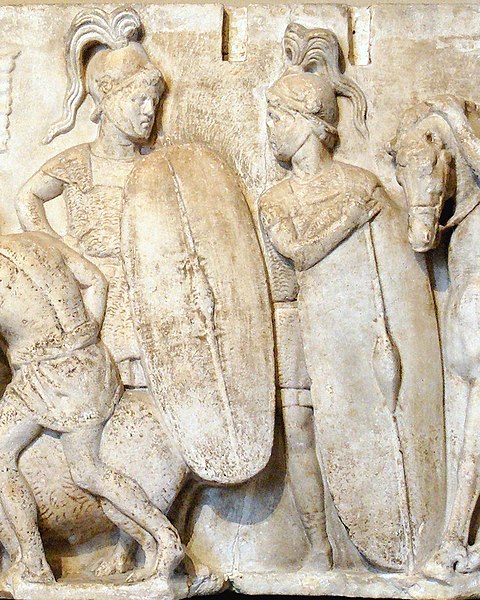The Treaty of Lutatius was the agreement between Carthage and Rome of 241 BC, that ended the First Punic War after 23 years of conflict. Most of the fighting during the war took place on, or in the waters around, the island of Sicily and in 241 BC a Carthaginian fleet was defeated by a Roman fleet commanded by Gaius Lutatius Catulus while attempting to lift the blockade of its last, beleaguered, strongholds there. Accepting defeat, the Carthaginian Senate ordered their army commander on Sicily, Hamilcar Barca, to negotiate a peace treaty with the Romans, on whatever terms he could negotiate. Hamilcar refused, claiming the surrender was unnecessary, and the negotiation of the peace terms was left to Gisco, the commander of Lilybaeum, as the next most senior Carthaginian on the island. A draft treaty was rapidly agreed upon, but when it was referred to Rome for ratification it was rejected.
Polybius – "a remarkably well-informed, industrious, and insightful historian".
A Roman coin from 109 BC alluding to Catulus's victory; it shows a galley within a wreath of oak leaves
Territory ceded to Rome by Carthage under the treaty is shown in pink
The First Punic War was the first of three wars fought between Rome and Carthage, the two main powers of the western Mediterranean in the early 3rd century BC. For 23 years, in the longest continuous conflict and greatest naval war of antiquity, the two powers struggled for supremacy. The war was fought primarily on the Mediterranean island of Sicily and its surrounding waters, and also in North Africa. After immense losses on both sides, the Carthaginians were defeated and Rome gained territory from Carthage.
Polybius, ancient Greek historian
An aerial photograph of the remains of the naval base of the city of Carthage. The remains of the mercantile harbour are in the centre and those of the military harbour are bottom right. Before the war Carthage had the most powerful navy in the western Mediterranean.
Detail from the Ahenobarbus relief showing two Roman foot-soldiers from the second century BC
Continued Roman advance 260–256 BC






